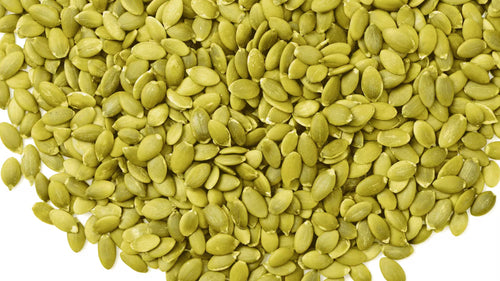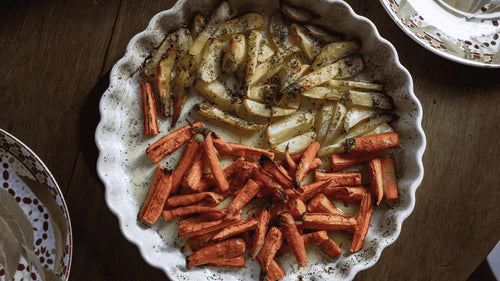
Pumpkin Skin: 5 Easy Recipes & Anti-Waste Tips
Quick answer: Yes, squash skin is edible for most varieties like butternut squash or pumpkin! It can be cooked roasted, as chips, stuffed, in soup or grated to add flavor, fiber and an anti-waste touch to your dishes 🍽️. Just remember to wash it well and choose an organic squash if possible.
Five creative recipes for using pumpkin skin 🥄
-
1. Crispy Pumpkin Skin Chips 🥔
Cut the skin into thin strips, mix them with a drizzle of olive oil, salt, smoked paprika and brown them in the oven at 180°C. The result: ultra-crispy chips, perfect as an aperitif or as a topping on soup! -
2. Whole roasted squash, skin included 🔥
Cut the butternut squash or pumpkin into quarters without peeling it. Add herbs, spices, a little garlic, and olive oil. Pop it in the oven: the skin will become tender and slightly caramelized. A delicious side dish! -
3. Grated squash skin into patties 🥞
Take the strips of skin, grate them, and mix them with potato, an egg, salt, pepper, and a little flour. Form small piles and cook in a pan. With a yogurt-lemon sauce, it's great! -
4. Velvety Pumpkin Skin Soup 🥣
Add the squash (with the skin), an onion, and a carrot, cover with stock, and let it simmer. Mix well: the skin adds smoothness, a beautiful color, and boosts the fibers of the soup. -
5. Surprise Stuffed Squash 🍽️
Hollow out the squash (keeping the skin intact), fill it with a vegetable or meat stuffing, cover with cheese and bake. The skin becomes the edible and tasty "shell" of your anti-waste dish!
Tip: If you use an air fryer , the pumpkin skin chips are ready in no time and super crispy!
Special anti-waste tips for pumpkin skin ♻️
- ✨ Everything is edible! Even the seeds: roast them in the oven for a protein-packed, zero-waste snack.
- 🧽 Brush the skin well before cooking, especially if it is not organic.
- 🤲 If the skin is very hard (butternut squash), cook it for a long time or cut it into small pieces to soften it.
- 🌿 The grated skin can also be added raw to salads or quiche to boost color and fiber.
- ✅ Vary the pleasures : each variety of squash has a different skin. The pumpkin is ideal for beginners!
Frequently asked questions about pumpkin skin 🧐
Can you eat the skin of all squash?
Most thin-skinned squashes (pumpkin, butternut squash, delicata squash) are completely edible after cooking. Squash with very thick skins can be less pleasant: sometimes they are blended into soup, or the skin is removed after cooking. Avoid eating raw skin if it is thick.
Is pumpkin skin healthy?
Yes! It's rich in fiber, antioxidants, vitamins, and minerals. It promotes satiety, aids digestion, and adds a colorful touch to your dishes. It's also an anti-waste and eco-friendly gesture 👍.
What does pumpkin skin taste like?
Pumpkin skin is soft, subtle, and sometimes slightly sweet. It adds a bit of chewiness and a pleasant texture. After cooking, it becomes tender or crispy depending on the recipe chosen.
How to properly prepare pumpkin skin?
Clean it thoroughly, trim off any damaged parts, and adjust how it's cooked (roasted, chips, soup, stuffed). If you're sensitive to pesticides, always choose organic squash.
Any ideas for not throwing away any squash?
Yes! Use the flesh for a puree, the skin for chips or pancakes, and the toasted seeds as a snack. You can even add the grated skin to muffins or savory cakes for a soft and colorful effect 🌈.
To go further 🍁
- Buy a local butternut squash or a Lorraine pumpkin to try at home.
- Discover the best air fryers for making crispy pumpkin skin chips.
- Other anti-waste ideas on bonpourtoi.ca






Why keep the pumpkin skin in your recipes? 🥒
Too often, we mechanically peel squash even though its skin is edible and full of benefits. It adds fiber , color, and a unique texture to your dishes. The skin also contains antioxidants and nutrients that are good for your health 💪. Plus, cooking with squash skin is a real anti-waste gesture and saves you time in the kitchen!
Be careful, not all squashes are equal: for a pleasant tasting, choose varieties with thin skin like pumpkin or butternut squash . For squash with very hard skin (such as butternut squash), it is better to remove the skin or blend it for a long time if you are making a soup.
Remember to wash the skin well (ideally with a vegetable brush) and choose organic to avoid residue. Don't hesitate to try it, you might be surprised by the softness and taste that the skin brings 😋.